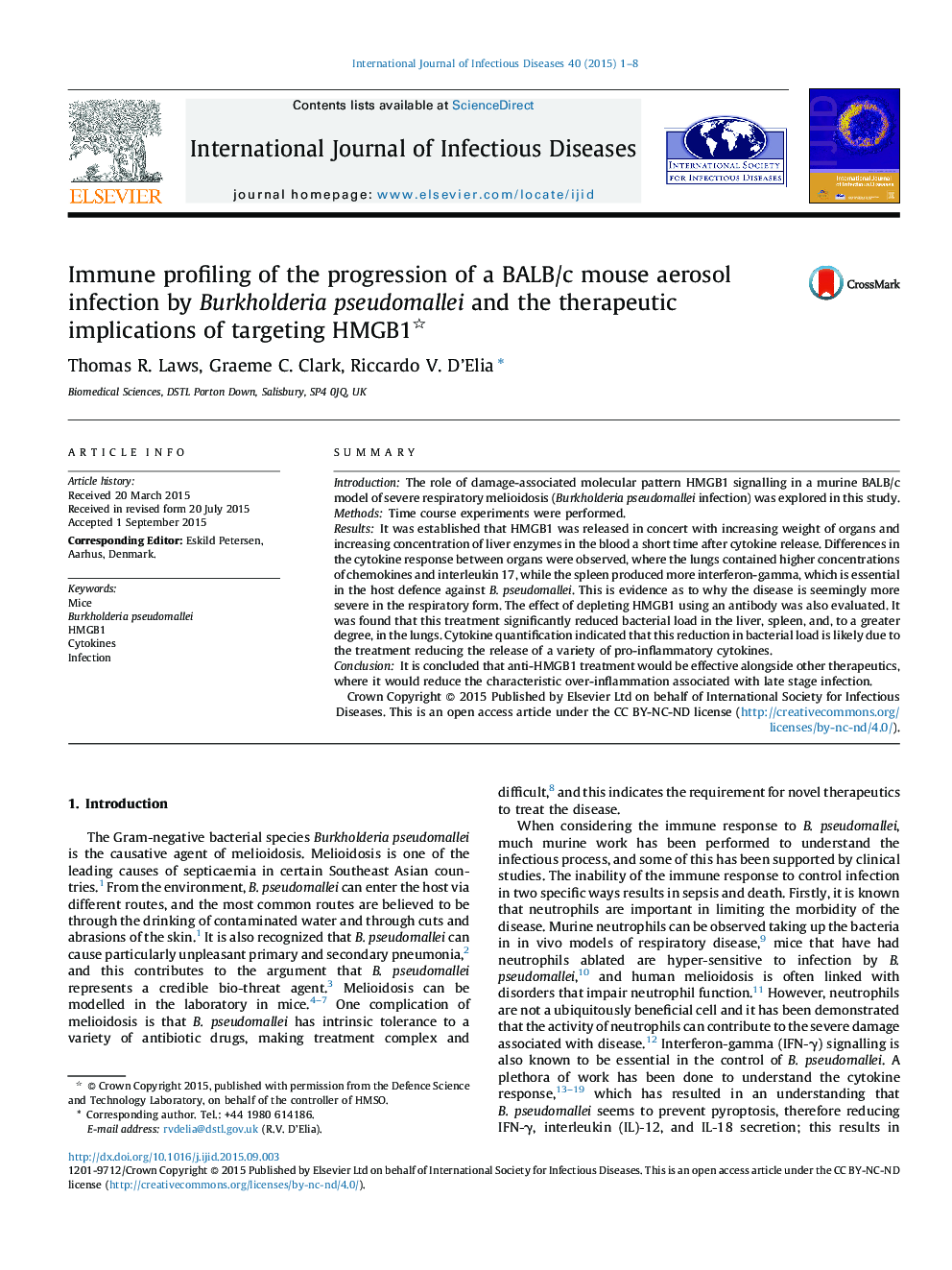| کد مقاله | کد نشریه | سال انتشار | مقاله انگلیسی | نسخه تمام متن |
|---|---|---|---|---|
| 3361957 | 1592055 | 2015 | 8 صفحه PDF | دانلود رایگان |

• Burkholderia pseudomallei infection by an airborne route was modelled in mice, and groups were culled for further analysis as the infection progressed.
• We found differences in the cytokines released by the different infected organs.
• We found that the damage-associated molecular pattern HMGB1 was released during infection.
• HMGB1 was removed from mice using an antibody during a B. pseudomallei infection.
• HMGB1 knockdown reduced the expression of some pro-inflammatory cytokines and reduced bacterial load, but did not increase survival measurably.
SummaryIntroductionThe role of damage-associated molecular pattern HMGB1 signalling in a murine BALB/c model of severe respiratory melioidosis (Burkholderia pseudomallei infection) was explored in this study.MethodsTime course experiments were performed.ResultsIt was established that HMGB1 was released in concert with increasing weight of organs and increasing concentration of liver enzymes in the blood a short time after cytokine release. Differences in the cytokine response between organs were observed, where the lungs contained higher concentrations of chemokines and interleukin 17, while the spleen produced more interferon-gamma, which is essential in the host defence against B. pseudomallei. This is evidence as to why the disease is seemingly more severe in the respiratory form. The effect of depleting HMGB1 using an antibody was also evaluated. It was found that this treatment significantly reduced bacterial load in the liver, spleen, and, to a greater degree, in the lungs. Cytokine quantification indicated that this reduction in bacterial load is likely due to the treatment reducing the release of a variety of pro-inflammatory cytokines.ConclusionIt is concluded that anti-HMGB1 treatment would be effective alongside other therapeutics, where it would reduce the characteristic over-inflammation associated with late stage infection.
Journal: International Journal of Infectious Diseases - Volume 40, November 2015, Pages 1–8